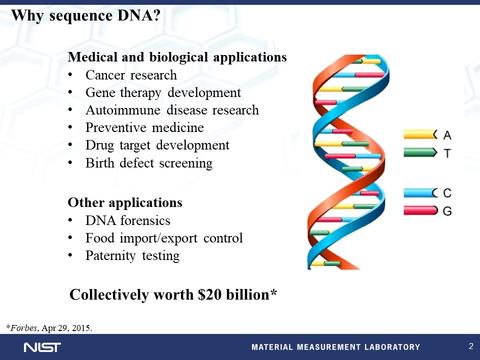Nucleic acid sequencer for electrically determining a sequence of nitrogenous bases in a single stranded nucleic acid
Patent Number: 10,381,107
Patent Description
This invention is a DNA decoder to determine a sequence of sequentially disposed nucleobases in single stranded DNA. DNA sequencing is critical in biomedical research, personalized cancer treatment, and fast and accurate forensic analysis. The current state-of-the-art in DNA sequencing methods takes 48 hours to produce full human genomic data and is costly (approximately $1000). Whereas this invention can produce full human genomic data in just 10 minutes for approximately $50.

Invention
A water-immersed nucleobase-functionalized suspended atomically thin nanoribbon as an intrinsically selective device for ultra-fast and accurate nucleotide detection is proposed. The proposed device combines Watson-Crick selective base pairing with the ability of atomically thin membranes to flex and deflect substantially in response to sub nanonewton forces. The deflection events can be detected in several ways, including capacitive effect, conversion of anisotropic lattice strain to changes in an electrical current at the nanoscale (e.g. in graphene), or via nanoscale piezoelectric effect (_e.g. in molybdenum disulfide or graphene oxide). The proposed approach can be applied to a variety of atomically thin materials, including non-covalently coated graphene and molybdenum disulfide (MoS2).
Features
This invention has the potential of becoming a speed – and cost-effective nanotechnology-based alternative to the currently used methods of obtaining a DNA sequence.

